
World War II Concentration Camps: Why You Need To Go
By Vanessa Gibbs

‘The one who does not remember history is bound to live through it again’ – George Santayana.
These are the words I repeat to myself, over and over, as I walk through one of the most harrowing times in human history.
It was a warm June morning in Krakow, Poland. The main square bubbled into life as the city started to wake up. The fairy tale facades shimmered in the sunlight as locals and tourists spilled into the city streets.
But instead of joining them, I climbed into a tiny tour bus heading towards the concentration camps of World War II.
There are some sides to a country’s history we’d rather ignore. The ugly sides, the unfair sides, the sides which remind us of a dark and cruel past. But ignoring sometimes means forgetting, and forgetting is something we cannot afford to do.
The Concentration Camps
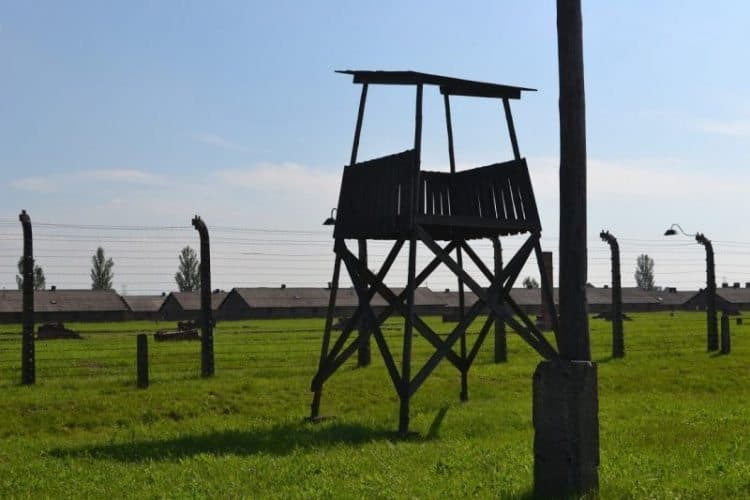
The two camps we visited, Auschwitz I and Auschwitz II-Birkenau, were built during World War II by the Nazis in Oświęcim, a Polish town west of Krakow.
They served as the center of the mass extermination of Jews, Poles, Roma Gypsies, and other ethnic groups.
I’d learned the basics of the camps at school but beyond that, I had, perhaps selfishly, chosen not to read, watch, or learn anything else about them. It’s a tough topic to voluntarily spend time with, and yet, here I was. Approaching the same gates that so many people before me had approached, an estimated 1.1 million of them meeting their death on the other side.
Auschwitz I
The first camp on our tour was Auschwitz I. Originally built to serve as Polish army barracks, these buildings were taken over by the Nazis and transformed into prisons and death camps for the thousands brought here.
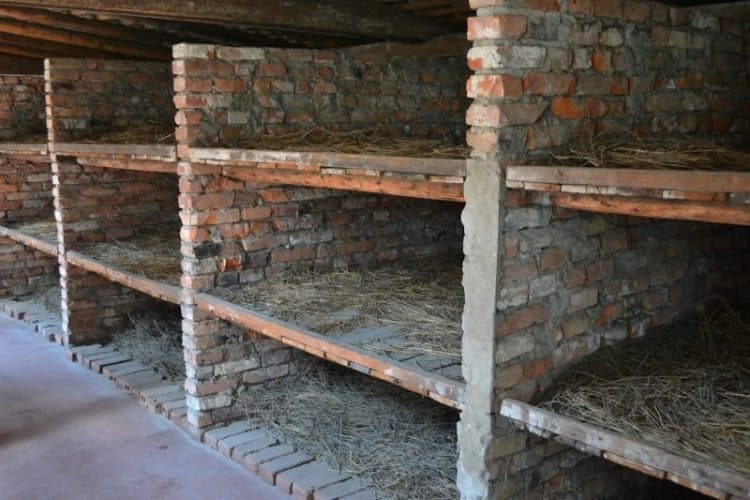
From the outside, it didn’t feel like a death camp. With tree-lined pathways, brick buildings and large patches of grass, it was almost pretty in the June sunlight. Almost.
Walking inside the barracks, however, we were quickly reminded of where we were. A number of buildings have been transformed into museum spaces detailing what life was like at the camp.
In one hallway, photos lined the wall. Upon arrival, each inmate was photographed and their date of birth, deportation date and nationality listed. When the prisoner population got too high, the Nazi’s began tattooing people to keep track.
That hallway was particularly tough to walk through. Reading names and seeing face after face, knowing now all too well what awaited each one of them.
I found it all hard to digest but some displays were particularly haunting.
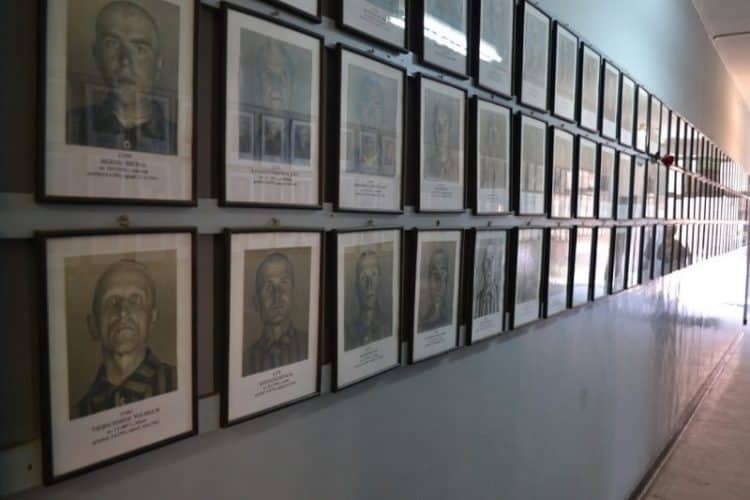
When the prisoners arrived, they were stripped of their belongings and shaved. But nothing was wasted.
Everything was kept, cataloged, and now displayed in their unimaginable numbers.
Piles upon piles of toothbrushes, watches, suitcases, glasses, clothing, and shoes all laid behind glass cases. It was a stark visual representation of the sheer number of people that suffered here.
In the next room, there was an enormous pile of hair weighing over 6.6 tons. It was human, it was real, and there was so so much of it. I found this one of the most difficult things to see on the tour. I have never been so close to something so horrific.
Taking photos wasn’t allowed here but I don’t think I could have taken any even if they were. It was sickening and I left that room feeling so much pain.
Stepping back outside into the bright sunlight, we went to see an execution spot. Flowers and tributes surrounded what was called the ‘Death Wall’ where thousands of prisoners were shot. I couldn’t help thinking that perhaps they were the lucky ones, knowing how so many others were killed.

We then entered Block 11, known as the Death Block. We were led down cold concrete steps and into a basement to see various torture rooms. Here, prisoners were subjected to immense darkness, starvation, and forced to stand in cramped conditions for days.
Being in the same rooms as where these atrocities had taken place, seeing the same walls and doors which those victims had seen, it was heart-wrenching. I struggled to accept that this had happened. It felt like a horror film or a fictional story, not a very real, very nonfictional time in history.
Next, we went inside a gas chamber. Our group shuffled through in silence, everyone hesitating to lift their heads. The air felt thick and oppressive. Seeing the holes in the ceilings where gas pellets were dropped and the machines used to burn bodies felt like the words of history books were suddenly laid out in front of me.
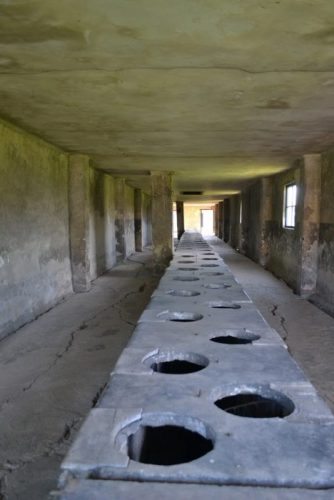
I found myself wanting to turn away and ignore everything. I desperately wanted to believe this was all just a horrible, horrible joke.
Auschwitz II-Birkenau
We caught a shuttle bus taking us the 1.2 miles to Auschwitz II-Birkenau. Built in 1942 due to overpopulation in the first camp, Birkenau became a labor and extermination site, the largest in human history.
The scale of the Holocaust hit home seeing this camp. That large number, 1.1 million deaths, is just that, a large number. It was hard to imagine. But piece by piece this tour solidified the sheer size of the genocide.
If the piles of belongings didn’t do it, the endless space of Birkenau definitely did. Walking through the main gate, the almost 500 acres of land stretched out in every direction. Rows upon rows of ruins were circled by roads and barbed wire fences.
From the front gate, railroad tracks stretched out towards the remains of more gas chambers. Upon arrival, a selection would take place where those deemed healthy enough to work were registered for forced labor and those who weren’t were taken to these chambers and murdered immediately.
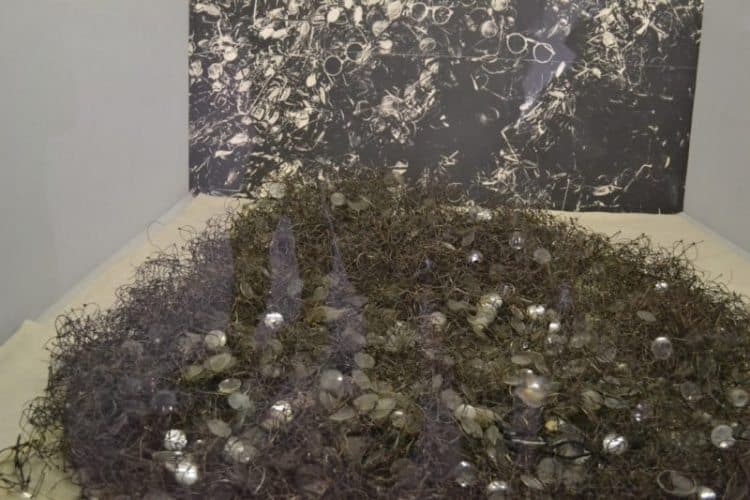
We toured the barracks where inmates slept. Tiny, bunk bed style spaces were used to house hundreds of people at once. The bathrooms were long stretches of latrines. Everything was basic, inhumane and echoed the cruelty that happened here.
As the war was ending, the Nazis tried to destroy any evidence of what had taken place at Auschwitz. Many barracks were burnt down and gas chambers were blown up with dynamite. But the tell-tale scars can still be seen. Chimneys, ruins, and pits of ashes still remain a stain on the Polish landscape.
Leaving the Camps
After touring both camps, our group climbed back into our bus and stared out the windows as we left Auschwitz behind.
I felt emotionally drained. I was shocked by the systematic and purposefully engineered brutality of it all.
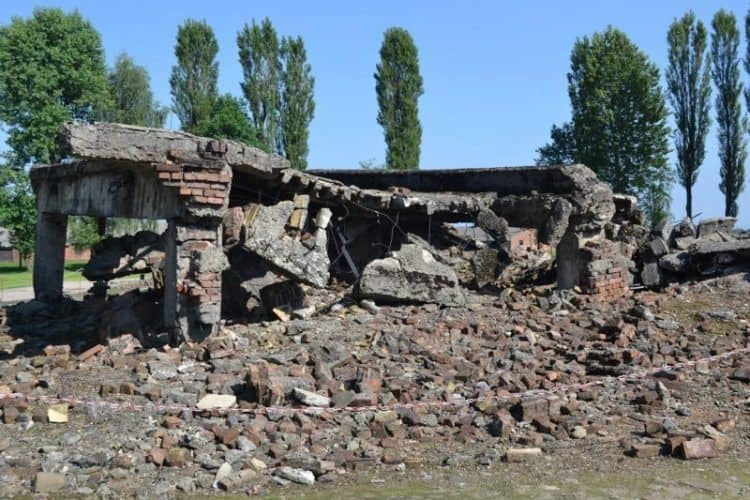
Even harder to comprehend was that this horror of humanity didn’t happen in some distant time, by some forgotten civilization. It was only 1944, only a generation or two before us.
There are still survivors alive today. There are still former Nazi guards alive today, a number of whom haven’t been convicted for their crimes. Visiting these camps made the Holocaust feel so real and so close.
I left feeling ashamed and powerless but also truly believing that everyone should see Auschwitz. It’s distressing but valuable and I’d argue necessary. To see them is to remember, and to remember, is to ensure that no one lives through it again.
Your Turn
Auschwitz Tours
- Website: http://bit.ly/2dfwAbM
- Price: $38USD
- Hotel pick up and drop off
- Duration: 7 hours
Viator
- Website: http://bit.ly/2e5bEWE
- Price: $44USD
- Hotel pick up and drop off
- Duration: 6 hours
It’s possible to get to Auschwitz from Warsaw with many tours offering hotel pick up, including Viator.

Vanessa Gibbs is a London-based freelance writer who writes about all things travel and lifestyle and likes to scuba dive and fill up passports. Find out more: www.vanessagibbs.com Say hi: @ness_gibbs
- These 9 U.S. National Parks Require Reservations in 2024 - April 17, 2024
- Take a Hike in Olympic National Park - April 17, 2024
- The Wild Mississippi: 2340 Miles Across Ten States - April 8, 2024


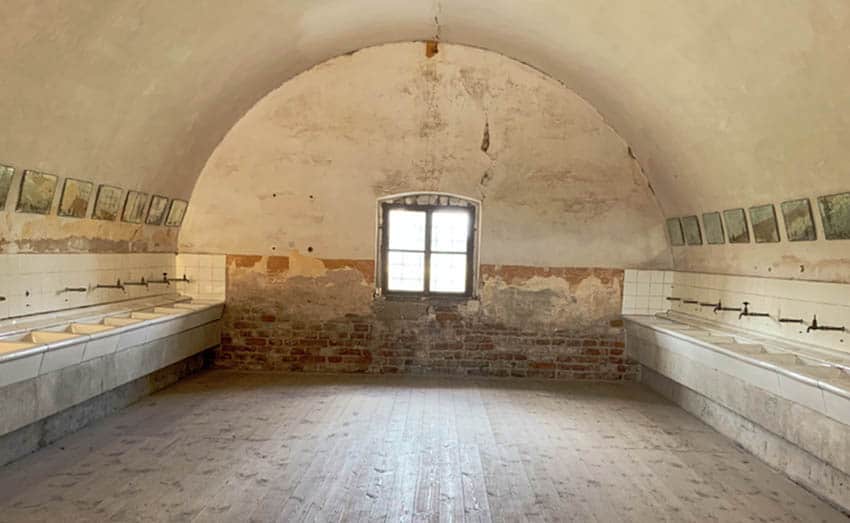

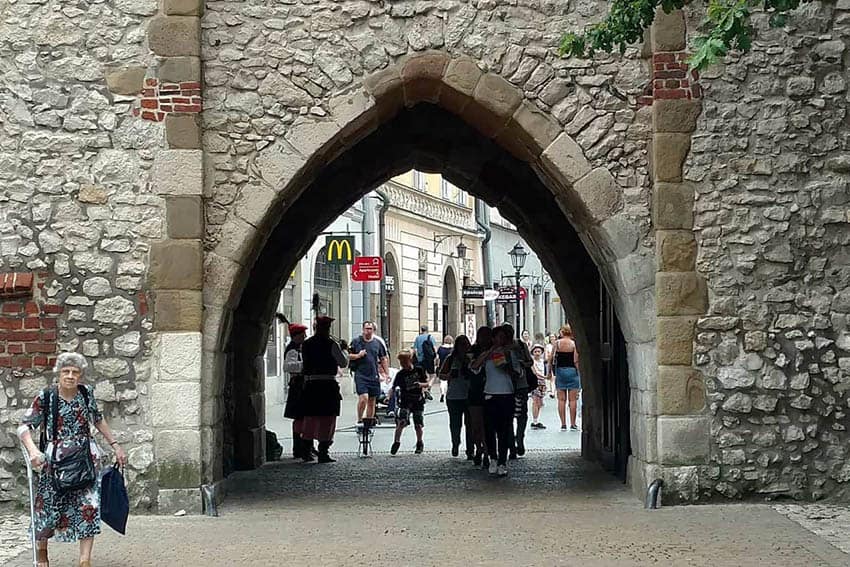
Plan to visit Poland in April 2022, will Auschwitz Concentration Camp be open? Information on tickets, etc would be so helpful! Live in the United States!
I took my Saint John’s University (MN), to Poland in 1976. We were invited to tour and play basketball for three weeks. We visited many of the concentration camps and Aushwitz was life changing for many of our players. It was a very quiet bus ride back to our hotel.
Cracov is near 😉 Must go there too!
Hi I am a Singaporean, who is visiting Poland in Christmas period. Could I know if it is opened in the period of Dec 27-30 .
Stanley is my name, many thanks and appreciate
I visited Aushwitz in 2006 and it was a very unique experience. Although I would never go back there, I guess I needed to see with my own eyes all the craziness that happened there.